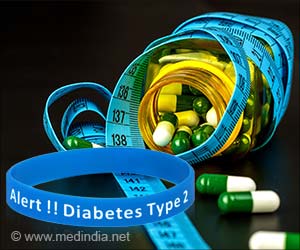
Pulmonary embolism (PE) and deep vein thrombosis (DVT), a blot clot generally occurring in the legs, constitute the two categories of a condition called venous thromboembolism (VTE). VTE is the third most common cardiovascular disease, and PE is the third most common cause of hospital-related death. EINSTEIN-PE is one of a series of large international phase III clinical trials of the anti-coagulant rivaroxaban to treat VTE or prevent a recurrence in patients with acute PE or DVT. The Food and Drug Administration has approved rivaroxaban as the only oral anti-coagulant for prevention of VTE in patients who have knee or hip replacement, procedures that carry clotting risks.
The trial compared rivaroxaban with standard therapy – injection of the anti-coagulant enoxaparin, followed by a vitamin K antagonist (VKA; either warfarin or acenocoumarol) chosen by each participating site – to demonstrate that the oral drug as a single agent is equivalent to the complicated two-drug standard therapy. In the standard regimen, enoxaparin must be given as an injection, and the VKA must be monitored with blood tests to make sure the dose is adequate and safe, because common drugs such as antibiotics, alcohol and some foods interact with VKAs. The monitoring measure is INR, an expression of the time it takes blood to clot: the higher the INR number, the higher the risk of bleeding.
"If you give standard treatment in the right way, it's a perfectly effective drug with almost 90 percent reduction in recurrent thrombosis, but it has to be well controlled," said Harry R. Buller, MD, PhD, professor of vascular medicine at the Academic Medical Center, Amsterdam, The Netherlands, who chairs the program for the three EINSTEIN studies. "The reason people look for alternatives is that it's a nightmare to give. Rivaroxaban makes things easier for everybody – patients and physicians. Our major aim was to show that it's at least as good as standard care."
The study, conducted at 263 sites in 38 countries, randomly assigned 2,419 patients to the rivaroxaban arm and 2,414 to standard treatment. All enrolled patients had a primary diagnosis of PE, and 25 percent in both groups also had DVT. Patients were treated for three, six or 12 months (average, seven) as deemed appropriate by each clinician before randomization. The rivaroxaban group received 15 mg twice a day for three weeks followed by 20 mg once a day. In the standard-therapy arm, the regimen was enoxaparin at 1.0 mg per kg of body weight twice daily, continued at least five days and stopped when the INR was 2.0 or more for two consecutive days, plus a VKA started within 48 hours after randomization with dose adjustment to maintain an INR of 2.0 to 3.0.
Rivaroxaban's efficacy was highly significant for non-inferiority with 2.1 percent recurrences (50 events) vs. 1.8 percent (44 events) in the standard-therapy arm. On safety measures of bleeding, rivaroxaban did much better: principal safety measure of major or clinically relevant bleeding, 10.3 percent vs. 11.4 percent for standard treatment; for major bleeding alone, 1.1 percent vs. 2.2 percent for standard therapy. Rates for primary endpoints were similar in both study arms regardless of patient characteristics.
Advertisement
Researchers also will be doing a subgroup analysis of the 8,200 patients in the EINSTEIN-PE and EINSTEIN-DVT trials to see if they can identify a risk profile for patients who are likely to have bleeding problems on standard treatment or the new drug.
Advertisement
Source-Eurekalert















